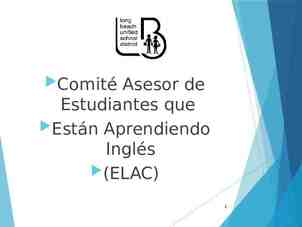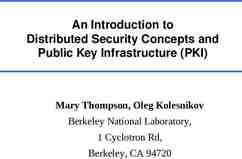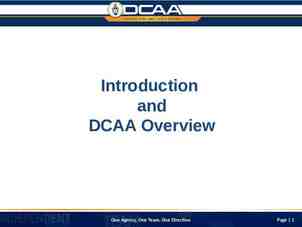Engineering Ethics
17 Slides70.77 KB
Engineering Ethics
Ethics: The rules or standards governing the conduct of a person or the members of a profession. (American Heritage Dictionary)
Attributes of a Profession Involves work requiring sophisticated skill, judgment and discretion. Membership requires extensive formal education rather than work experience or apprenticeships. Members set standards of admission, conduct, and quality –– and enforce these standards.
Some Professional Organizations and Societies with Codes of Ethics ABET (Accreditation Board for Engineering and Technology) NSPE (National Society of Professional Engineers) IEEE (Institute for Electrical and Electronic Engineers) ASME (American Society of Mechanical Engineers) ASCE (American Society of Civil Engineers) SME (society of manufacturing engineers)
ABET Code of Ethics of Engineers THE FUNDAMENTAL PRINCIPLES Engineers uphold and advance the integrity, honor and dignity of the engineering profession by: I. using their knowledge and skill for the enhancement of human welfare; II. being honest and impartial, and serving with fidelity the public, their employers and clients; III. striving to increase the competence and prestige of the engineering profession; and IV. supporting the professional and technical societies of their disciplines.
ABET Code of Ethics of Engineers THE FUNDAMENTAL CANONS 1. Engineers shall hold paramount the safety, health and welfare of the public in the performance of their professional duties. 2. Engineers shall perform services only in the areas of their competence. 3. Engineers shall issue public statements only in an objective and truthful manner. 4. Engineers shall act in professional matters for each employer or client as faithful agents or trustees, and shall avoid conflicts of interest.
ABET Code of Ethics of Engineers THE FUNDAMENTAL CANONS 5. Engineers shall build their professional reputation on the merit of their services and shall not compete unfairly with others. 6. Engineers shall act in such a manner as to uphold and enhance the honor, integrity and dignity of the profession. 7. Engineers shall continue their professional development throughout their careers and shall provide opportunities for the professional development of those engineers under their supervision.
IEEE Code of Ethics We, the members of the IEEE, in recognition of the importance of our technologies in affecting the quality of life throughout the world, and in accepting a personal obligation to our profession, its members and the communities we serve, do hereby commit ourselves to the highest ethical and professional conduct and agree: 1. to accept responsibility in making engineering decisions consistent with the safety, health and welfare of the public, and to disclose promptly factors that might endanger the public or the environment;
IEEE Code of Ethics 2. to avoid real or perceived conflicts of interest whenever possible, and to disclose them to affected parties when they do exist; 3. to be honest and realistic in stating claims or estimates based on available data; 4. to reject bribery in all its forms; 5. to improve the understanding of technology, its appropriate application, and potential consequences; 6. to maintain and improve our technical competence and to undertake technological tasks for others only if qualified by training or experience, or after full disclosure of pertinent limitations;
IEEE Code of Ethics 7. to seek, accept, and offer honest criticism of technical work, to acknowledge and correct errors, and to credit properly the contributions of others; 8. to treat fairly all persons regardless of such factors as race, religion, gender, disability, age, or national origin; 9. to avoid injuring others, their property, reputation, or employment by false or malicious action; 10. to assist colleagues and co-workers in their professional development and to support them in following this code of ethics.
Ethical, Moral and Legal Ethical: Conforming to accepted standards of conduct, usually of an organization or profession. Moral: relating to right and wrong; considered right and good by most people. Legal: permitted by law. Where there is a conflict between an ethical and legal decision, the ethical decision should always prevail.
7 Steps to Ethical Decision Making 1. Recognize the problem Example: Is there a conflict of interest or are we misrepresenting our capabilities? 2. Check the facts Verify information. It may be the problem is more perceived than real. 3. Identify relevant factors What policy, professional code or law applies? Are there practical considerations? 4. List the options
7 Steps to Ethical Decision Making 5. Analyze the options - Utility: does one option provide more “utility” to people, that is to say more benefit and less harm? - Rights: which option(s), if any, violate a person’s rights? - Reversibility: would an option be good if I were the one adversely affected by it? - Defensibility: which option(s) could I defend in court, in congress or before my profession’s ethics committee? - Publicity: Would any option be perceived as dishonest or unethical if publicized?
7 Steps to Ethical Decision Making 6. Make a choice - In some cases there is no clear option. You have to use your best judgment. 7. Reconsider Policy - Try to structure your [organization’s] policies and procedures to avoid this kind of conflict in the future.
Scenario #1 You have found employment at a good company, and you like your colleagues. One day your supervisor announces that your team needs to recommend a voltage regulator circuit for an upcoming product and the design freeze is in one week. At your company, linear regulators are well known and tested, but at school you used a switching regulator that costs about the same but is far more efficient. Problem is that it would take a month of analysis to know if the noise from the switching regulator is within acceptable limits. Your supervisor asks you to write the recommendation and leave out any mention of the switching regulator. What do you do?
Scenario #2 Your company is considering two off-road vehicle designs, one with three wheels and one with four. Research has shown that the four-wheeled vehicle is significantly more stable, but both meet safety standards and either could be sold without legal ramifications. The three-wheeled vehicle would be easier to design and cheaper to produce. The lower price would result in substantially more sales and a higher profit margin. Is it ethically acceptable to recommend the three-wheeled version in spite of its greater potential for safety risks?
Scenario #3 An automotive safety device has been patented by another company, but their licensing fees are so high that using it in your company’s automotive product will significantly increase the price to the consumer (and decrease sales). You are asked to examine the patent and design a similar device that does the same thing but does not technically infringe. You read the patent and find a loophole that makes such a design possible. You run your idea past the patent attorney who says that he can get a patent issued but it will probably not hold up in court. He encourages you to patent the design anyway so the company will have leverage negotiating for lower licensing fees. What do you do?






















